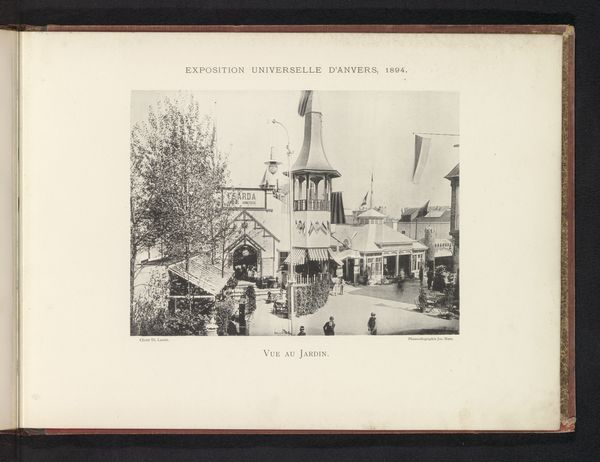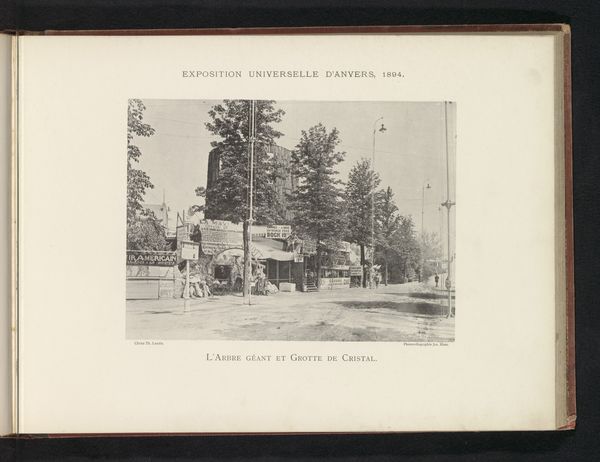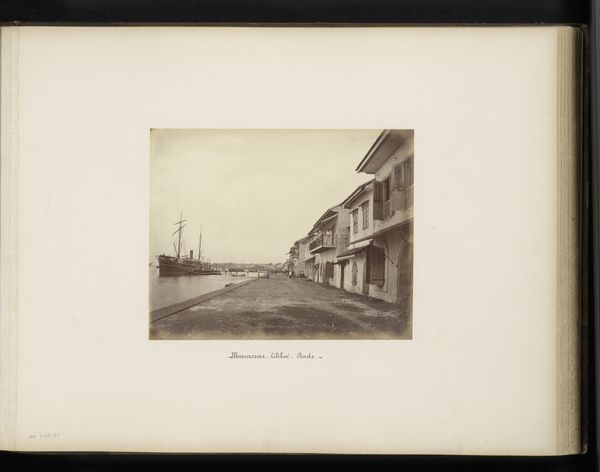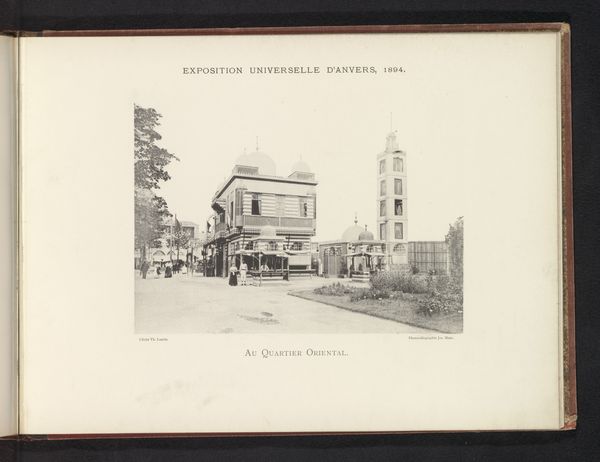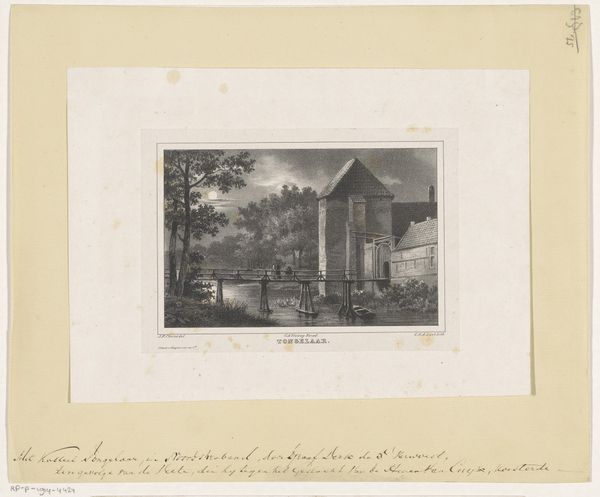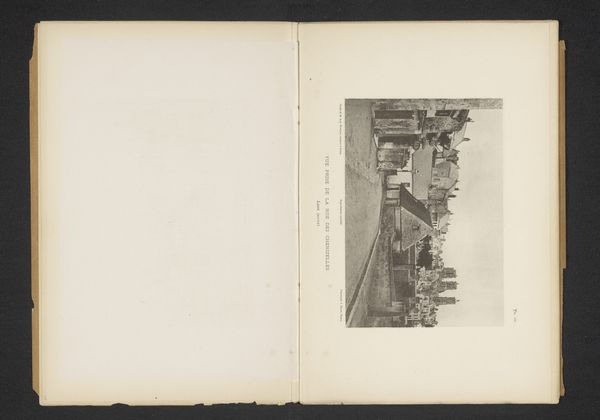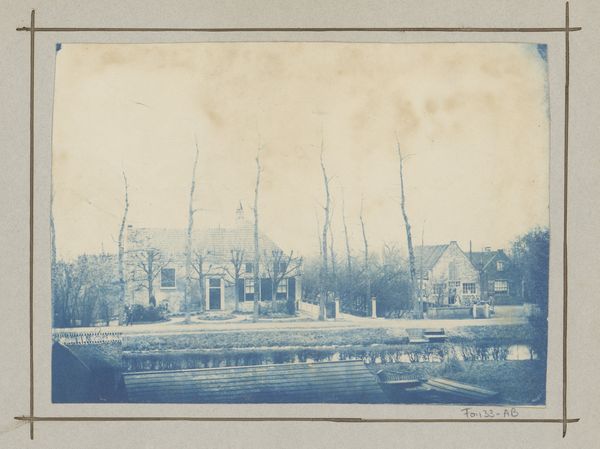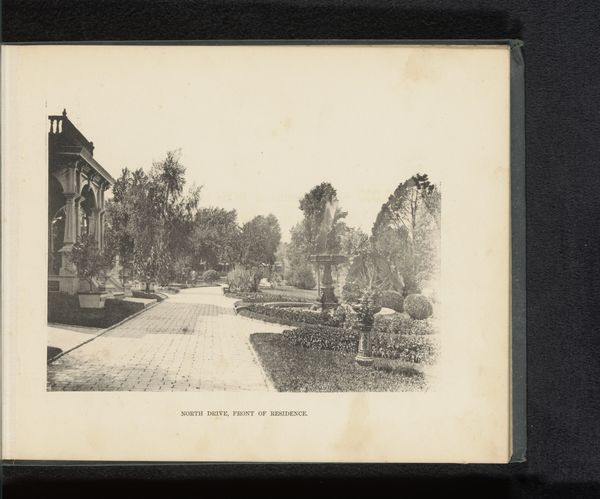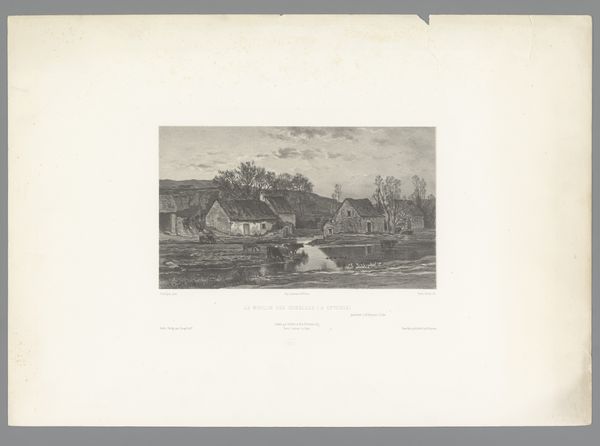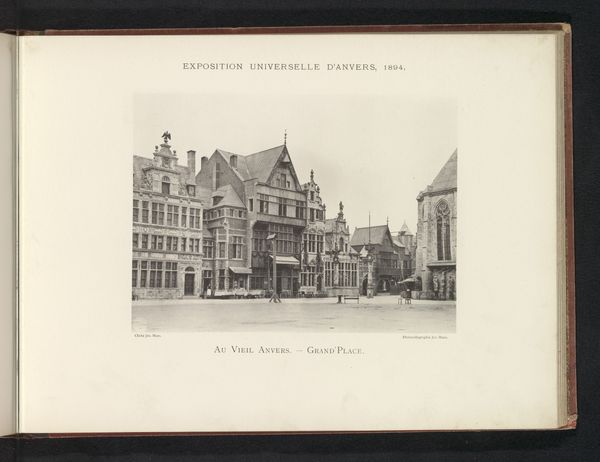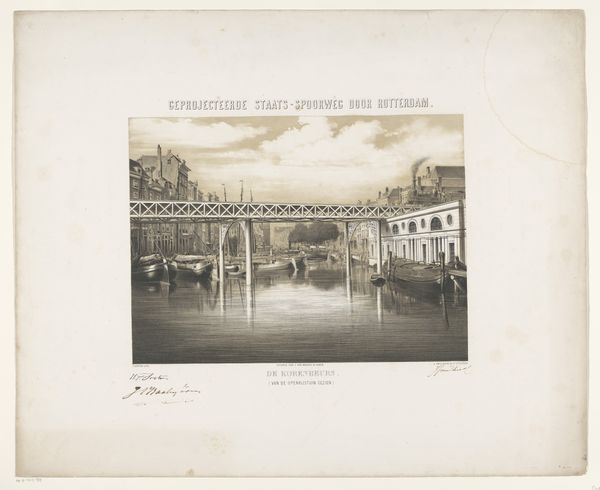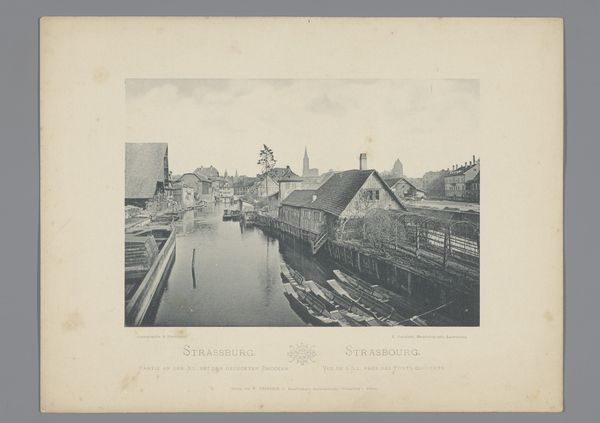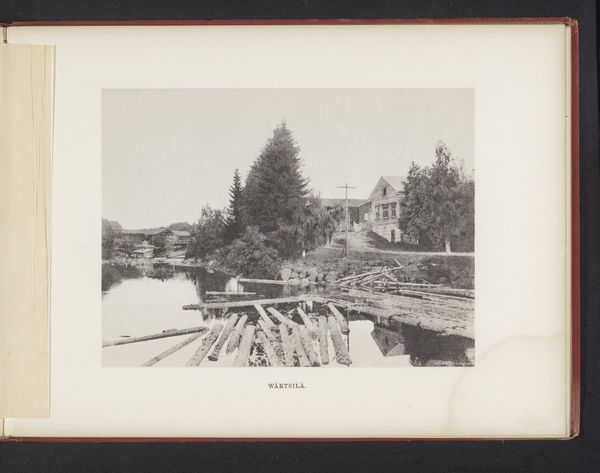
photography
#
landscape
#
photography
#
cityscape
Dimensions: height 161 mm, width 220 mm
Copyright: Rijks Museum: Open Domain
Curator: This photograph, titled "Tuin op het terrein van de wereldtentoonstelling te Antwerpen," or "Garden on the grounds of the World Exhibition in Antwerp," offers a glimpse into the 1894 World's Fair. The image is credited to Th. Lantin, and what a remarkable record of the fair's grounds! Editor: It has a surprisingly calm, almost pastoral quality, given it documents a world's fair. The monochrome tones certainly contribute to that. I’m drawn to the architectural structure in the foreground; its form and the meticulous arrangement of elements surrounding it remind me of a Japanese garden aesthetic. Curator: Precisely! Japonisme was heavily influencing design at the time. It's likely the very construction of the fair – its pavilions and grounds – facilitated a material exchange, demonstrating evolving tastes to a large public. This print shows the influence that this particular design choice was having on exhibition landscapes. Editor: And thinking about the production of this photographic print itself, consider the labor involved. Preparing the chemicals, coating the plates, the darkroom work... the human touch is evident, even if it captures a moment intended to showcase industrial progress and perhaps hide any hint of labor at play in the background. Curator: Indeed, photography itself was rapidly evolving industrially at this time. This print could be examined within that historical context, considering the shifting means of visual representation and how that affected the consumption of art and the way people were engaging with imagery on a larger scale, not just as the elite would do. Editor: Considering the potential audience, those visitors at the World’s Fair likely understood the image not as something we’d consider 'art', but rather as a documentation of that temporary urban intervention—a fleeting, constructed paradise built for display, which the labor was meant to serve. Curator: This makes me think about the legacy of these exhibitions—their photographs, like this one, were circulated beyond the immediate location, informing a broader understanding of modernity itself and shaping a new world order. Editor: Yes, this image acts almost like a manufactured souvenir, a document imbued with the spectacle and social and economic contexts. Curator: The convergence of historical processes, art, industry and material evidence opens to fascinating paths. Editor: This intersection definitely deepens the understanding of both the subject, the photograph, and how it captures such a culturally vibrant moment in time.
Comments
No comments
Be the first to comment and join the conversation on the ultimate creative platform.

